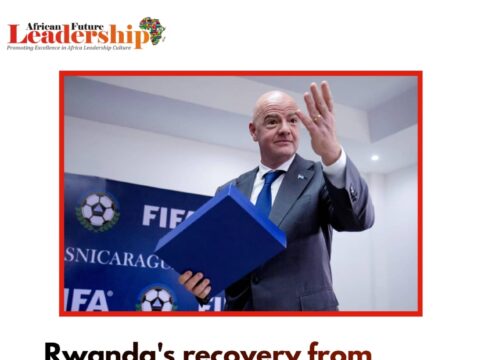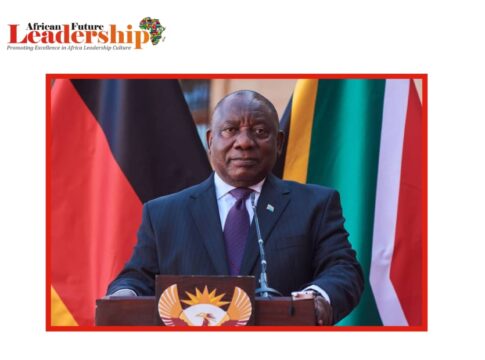By Stephen Onyeiwu, Professor of Economics & Business, Allegheny College
Nigeria has successfully introduced new banknotes on about 10 occasions since independence in 1960. So why has the latest attempt been so controversial and traumatic? And what measures need to be taken to avoid a future debacle?
Nigeria’s central bank announced the introduction of new banknotes last November, with the changeover to new notes scheduled for mid-December. The rollout of the policy disintegrated into chaos, amid mounting anger among ordinary Nigerians.
- The rollout of the currency change was disastrous. The fallout included:
- Severe shortages of the new banknotes.
- Precipitous declines in business transactions (especially in the informal sector).
- Long queues at bank premises and overcrowded banking halls
- Attacks on bank staff and destruction of bank property, including ATMs that failed to dispense cash.
- The policy also led to lawsuits by some state governors against the Central Bank of Nigeria and the Federal Government.
- I have identified five factors that marred the redesign policy, most of which could have been avoided by the Central Bank of Nigeria.
- Read more: Nigeria’s currency redesign and withdrawal limits: questionable policy and bad timing
Litany of errors
Cost-benefit: An egregious error committed by the central bank was its violation of the principle of cost-benefit analysis. This is a simple rule in economics that implores policy makers to undertake an initiative only when the benefits exceed the costs. One should ask: What were the benefits of introducing the policy? What were the potential costs at the time of implementation?
The central bank justified the redesign policy as follows: to rein in counterfeiting, promote a cashless economy by limiting the amount of the new banknotes that can be withdrawn, reduce the large quantity of dirty notes circulating in the economy, discourage hoarding, curb crimes like kidnapping and terrorism, and head off illicit financial transactions.
It also saw the policy as a way of addressing the huge amount of currency outside the formal financial sector; 85% of banknotes circulate outside the banking system, largely because of hoarding and illicit financial transactions.
READ MORE: SVB shockwaves pound global bank stocks gripped by contagion fears
And the cost? If indeed the central bank considered the cost, it obviously underestimated it. How would anyone ignore the large-scale disruptions in the economy and loss of productivity that the policy caused, not to speak of the stress and anxiety inflicted on Nigerians?
Communication: Of all the pitfalls that doomed the currency redesign policy, at least as conceived originally, the lack of effective communication about the overarching goals and modus operandi of the exercise was the most devastating.
Nigeria’s central bank threw a basic element of strategic planning and communication to the winds when it failed woefully to communicate and educate the public about expectations, prior to launching the policy. According to strategic planners, a major policy initiative that is not well communicated, from the top of the strategy planning pyramid to the bottom, is bound to fail.
The central bank should have sought the buy-in of major stakeholders, especially the National Economic Council and the National Assembly. The central bank would have had a better chance of avoiding the ferocious push-back it got.
The central bank finally began rolling out a communication plan by late December 2022. But this was too little too late. By then Nigerians had already characterised the policy as decidedly punitive. The narrative that had gained ground was that the change was designed to curtail the ability of politicians to buy votes during the 2023 elections.
This inevitably raised the question of why millions of Nigerians should suffer because of politicians?
The central bank’s mishandling of communication was also manifested in the fact that it failed to issue policy guidelines to commercial banks and the public days after the Supreme Court nullified the bank’s earlier deadline. This has exacerbated the confusion associated with the policy, as merchants and businesses continue to reject the old notes, despite the court’s rulings.
Inappropriate timeframe: The timeframe for implementation was unrealistic and impracticable. By setting a very short timeframe for phasing out the old notes, the Central Bank of Nigeria appeared to have adopted textbook assumptions about how the Nigerian banking system works.
Anyone who has been to a typical commercial bank in Nigeria would know it would have been impossible for the banks to undertake the monumental task of collecting old notes and dispensing the new ones within the one-and-a-half month window originally allowed by the central bank. Overcrowding, chaos, excruciatingly slow service and unnecessary bureaucratic red tape are quite common during normal banking hours. It is not uncommon to observe people with “connection” circumvent queues and obtain preferential access to bank staff. Although Nigerian banks pride themselves as being digitised, a lot of paper-pushing still goes on within the banking system.
The central bank should have considered this fact and allowed for a longer timeframe for implementation.
There was also no persuasive rationale for the rushed implementation of the policy. Neither was the central bank able to explain why the old and new notes could not coexist, a measure the Supreme Court has now mandated the bank to implement.
READ MORE: Money in failed US bank is safe – US government
Conflicting goals and lack of prioritisation: Policy targeting is a major precondition for success. The focus on one unambiguous objective in past redesign policies enabled the central bank to conduct a seamless and less dramatic exercise.
The current redesign policy had too many goals, and it was unclear which one was the target goal.
Identifying target goals enables policy makers to select appropriate instruments for achieving those goals. But when there are too many goals, the danger is that an instrument designed for one goal may undermine another goal.
For instance, the goal of reining in money laundering and illicit financial transactions meant that the Central Bank of Nigeria needed to deliberately restrict access to the new banknotes. But this inflicted unintended hardships on innocent Nigerians who simply wanted to access their hard-earned money.
The central bank should have focused on one major goal. If the goal was to phase out old notes, as the bank is statutorily mandated to do, then the old and new notes could have circulated alongside each other until the old notes were phased out.
A casual announcement that new notes would be circulating from a given date would have been all that was needed. People would not have panicked and rushed to the banks to withdraw money.
Economic headwinds: It is very difficult to implement a major policy initiative that negatively affects people during a period of macroeconomic instability. The central bank policy came at a bad time. Nigeria’s economy is in a shambles, with a 22% inflation rate, 33% unemployment rate – 43% among young Nigerians – and a growth rate of 3%.
These economic challenges have been compounded by a 17.5% interest rate, steep declines in the value of the Naira, and widespread poverty.
Nigerians’ tolerance for economic shocks was already at its limit when the redesign policy was launched. The policy and the confusion that accompanied it tipped them over the edge.
The challenge of credibility
The central bank needs to reestablish its credibility as the “people’s bank,” to reverse a self-inflicted image of an organisation that’s partisan.
READ MORE: Doctors remove twin’s foetus from the skull of one-year-old girl
The bank has a fiduciary responsibility of catering to the interests of its main “shareholder,” the Nigerian people. But the perception is that the bank lacks independence. To effectively discharge its statutory duties, the Central Bank of Nigeria should initiate a process of re-asserting its independence and regaining the people’s trust and confidence.
This article is republished from The Conversation, a nonprofit news site dedicated to sharing ideas from academic experts.




